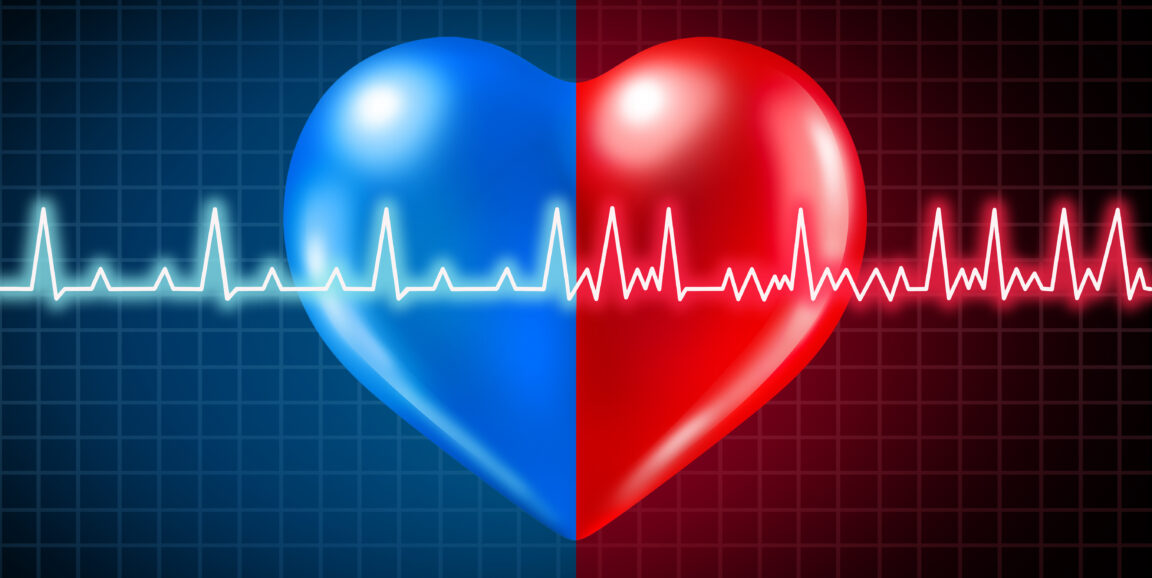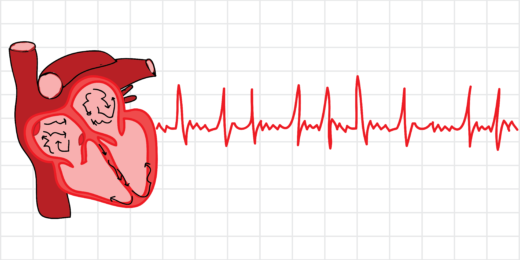In atrial fibrillation (AFib), half of the heart's four chambers aren't beating properly, but are dancing around randomly without rhythm.
This sounds scary and, in some ways, it's astonishing that people with AFib can function well at all. But remember that the heart's upper chambers (the atria), which are malfunctioning in AFib, don't pump blood to the body or through the lungs. They simply pass blood on to the muscular lower chambers of the heart (the ventricles) that do the hard work.
People with AFib tend to do fine when they're not exerting themselves. Without treatment for AFib's fast heart rate, however, the ability to be physically active is greatly reduced and the heart muscle can be damaged over time. As with all of us, AFib patients benefit from consistent, moderate exercise. Thus, slowing down the heart in AFib is a key goal.
Sometimes finding the right solution for AFib patients is like a puzzle.
When George H., our 71-year-old patient with AFib, was first diagnosed, his heart rate was 150 beats per minute (normal at rest is 60-100). With his heart rate this high, he felt that he could not do anything requiring even mild exertion.
During his first visit to the ER, he was given metoprolol, a beta blocker drug, to slow down his heart. When this dose did not consistently lower his heart rate below 100 beats per minute, his doctor doubled his dose.
George, however, often has a normal electrical pattern of regular heartbeat and only goes into AFib on occasion. When his heart is not in AFib and he took the doubled dose of metoprolol, his blood pressure fell to 105/55, his heart rate went down to 48, and he became "fuzzy-headed." For George, finally switching to a dose halfway in between the low and high doses solved this problem.
For some people, AFib is an occasional problem, termed "paroxysmal AFib." When their hearts go into AFib they often go back to a normal rhythm on their own or can be given drugs or a mild electrical shock to return them to a normal heart rhythm. For others, AFib is permanent, meaning once their heart is in AFib, it stays in AFib.
For both groups, it is critical to keep the heart rate in a normal range. This makes people in AFib feel much better and allows them to be more active. It also protects the heart muscle from damage. Three types of inexpensive drugs are used to the lower heart rate in AFib:
- Beta blockers, also used to lower blood pressure, are prescribed to 21 percent of AFib patients to reduce heart rate. They reduce the number of chaotic electrical signals from the heart's upper chambers (the atria) that can travel into the lower ventricles where the signals trigger contraction of the muscular part of the heart. When using beta blockers, heart rate often goes down dramatically, for example, from 140 to 90 beats per minute. Commonly used beta blockers include metoprolol (brand name Toprol) and carvedilol (Coreg). Potential side effects include weight gain, cold hands or feet, and fatigue.
- The calcium channel blockers verapamil and diltiazem are also used to lower heart rate in AFib. They work in a similar way to beta blockers. These drugs are taken by 10 percent of AFib patients and have side effects that include headache, constipation, and ankle swelling.
- Digoxin, often used in the past to slow down the heart rate in AFib, is less effective and requires more monitoring than other drugs. Today only 3 percent of AFib patients use this drug.
The relatively low rate of use of these drugs implies that they may be underused. Some AFib patients not taking these heart-rate-lowering medications might benefit from their effectiveness in reducing AFib symptoms and improving quality of life.
A logical first step in the AFib journey is to understand the risk of stroke as well as the benefits and dangers of blood thinners. Knowing the drugs commonly used to slow down the heart in AFib is also important as you become more aware of AFib and how it is treated.
This is the fourth in a series of blog posts called Understanding AFib to help patients with atrial fibrillation live healthier lives. Next week, the blog post will discuss how patients can tell whether they are in AFib and how to measure their heart rate. George H. is an actual patient with some details altered to protect his confidentiality. Estimates related to drugs used for heart rate control come from IQVIA's National Disease and Therapeutic Index.
Randall Stafford, MD, PhD, is a professor of medicine at Stanford and practices primary care internal medicine. Stafford and Stanford cardiologist Paul Wang, MD, lead an American Heart Association effort to improve stroke prevention decision-making in atrial fibrillation.
Photo by freshidea






